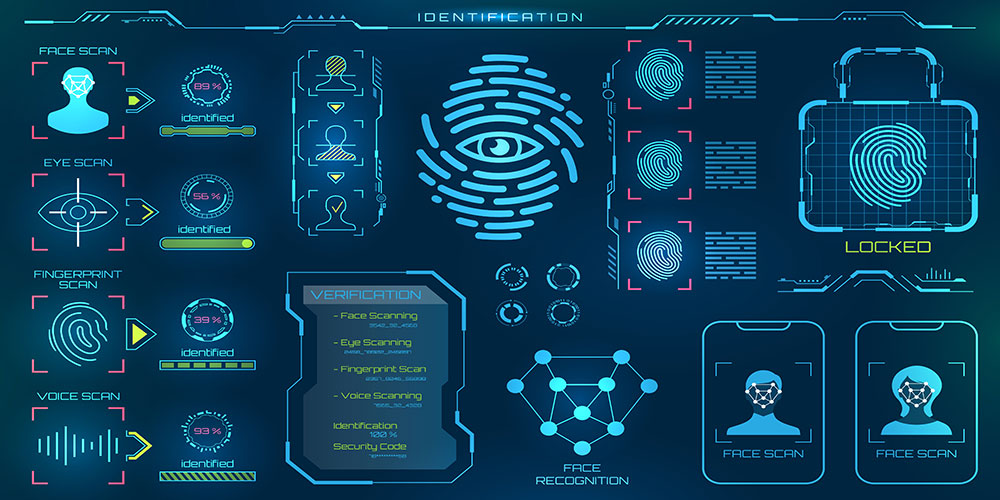Universities are under immense stress every day. Their teams are saddled with the heavy responsibility of protecting students, staff members, and visitors while maintaining an efficient workflow and comfortable environment. Very few businesses have to walk this kind of knife’s edge between security and functionality, and without the right systems in place, the challenge can feel insurmountable. But with the help of modern biometrics, universities of any size can rise to the unique challenges of their industry and properly protect everyone on campus.
Overcoming the Pitfalls of Legacy Systems
Legacy systems simply cannot handle the needs of a modern university. Most campuses today barely get by, using an array of disparate products, including access control units, video surveillance cameras, and health safety devices. Unfortunately, these systems often operate independently of one another, leading to disconnects that can cause major problems for staff and students alike.
A centralized, biometrics-based system, on the other hand, can unify every vital device and give universities unprecedented control over their campus in a way that aging physical access control systems (PACs) cannot
Bring Things Together with Biometrics
There are countless ways biometrics can optimize a campus. For example, biometric systems establish a centralized database of known student and faculty identities, each with its own set of access rights. These identities can not only be used to manage access to student housing, athletic facilities, and other locations across campus but to keep track of time and attendance for workforce management purposes.
Another example is the consolidation of devices at entrances that biometrics can bring to every entry point. Most campuses today have card readers to control access and cameras positioned above doorways to monitor for security threats. A single biometric reader can fill the role of authentication and video surveillance, saving both money and space through consolidation.
The Healthy Choice
Biometrics offer another benefit for campuses over traditional systems, a benefit that has become impossible to ignore in light of recent events. After the onset of COVID-19, it became clear that most campuses were completely unprepared for the task of protecting their students from health-based threats. For locations that had already implemented biometrics, the sting of this devastating situation was greatly reduced.
Modern biometrics, like facial recognition devices, offer touchless access control solutions that effectively eliminate the spread of germs through shared touch surfaces. The latest models even offer the ability to detect elevated body temperatures to filter out potential carriers of fever at the door.
Elegant Solutions for End Users
So many companies talk about how their solutions can help the people who buy them, but biometrics are inherently beneficial to the people who use them every day as well. Unlike card readers that require easily lost credentials, biometrics let users become their own credentials. With a single swipe of a finger or presentation of a face, users can be through the door more quickly and easily than ever possible in the past. Everyone will appreciate this convenience, from students going in and out of dining halls and dorm rooms to employees navigating their faculty buildings.
Holistically Improve Every Part of Your Campus
The positive ripple effects of biometrics echo across every part of a campus. Below are just some of the most useful deployment points for campus security teams to consider.
- Athletic facilities: Athletics facilities are major draws for campuses. Biometrics can eliminate the need for physical credentials, saving athletes from having to carry them during practices or games, and also provide delineations between public areas for spectators and locker rooms for players and coaches.
- Science centers: University laboratories are home to some of the most sensitive equipment on campus. Biometrics offer the highest level of security for these locations, including multi-factor authentication that combines facial recognition, fingerprints, PINS, and access cards.
- Campus housing: Biometrics can protect dormitories 24/7, making students’ lives easier and eliminating the need for expensive security guard services. Visitor access can also be easily managed through these modern systems.
- Food services: Biometric validation can ensure that only people paying for a dining plan can access its benefits. This alone can save universities countless thousands a year.
- Admissions: Admissions departments need to make a sparkling first impression on potential students and their parents. Modern, luxurious biometric devices show a commitment to the latest technology and security measures that will put both parents and students at ease. Visitor access for tour groups or individuals who are interested in the school is also a breeze via biometric devices.
Bring Your Campus Into the 21st Century
Biometrics offer a trifecta solution, addressing physical security, workforce management, and health safety needs simultaneously. With these modern units, you can eliminate hundreds of disparate legacy devices and unify your campus under one umbrella of unmatched security and convenience. If you are looking for the premier solution for the safety and efficiency of your campus, biometrics are the only viable choice for the challenges of today and tomorrow.
Shiraz Kapadia is CEO & President of Invixium, a biometric access control manufacturer.
Note: The views expressed by guest bloggers and contributors are those of the authors and do not necessarily represent the views of, and should not be attributed to, Campus Safety.













